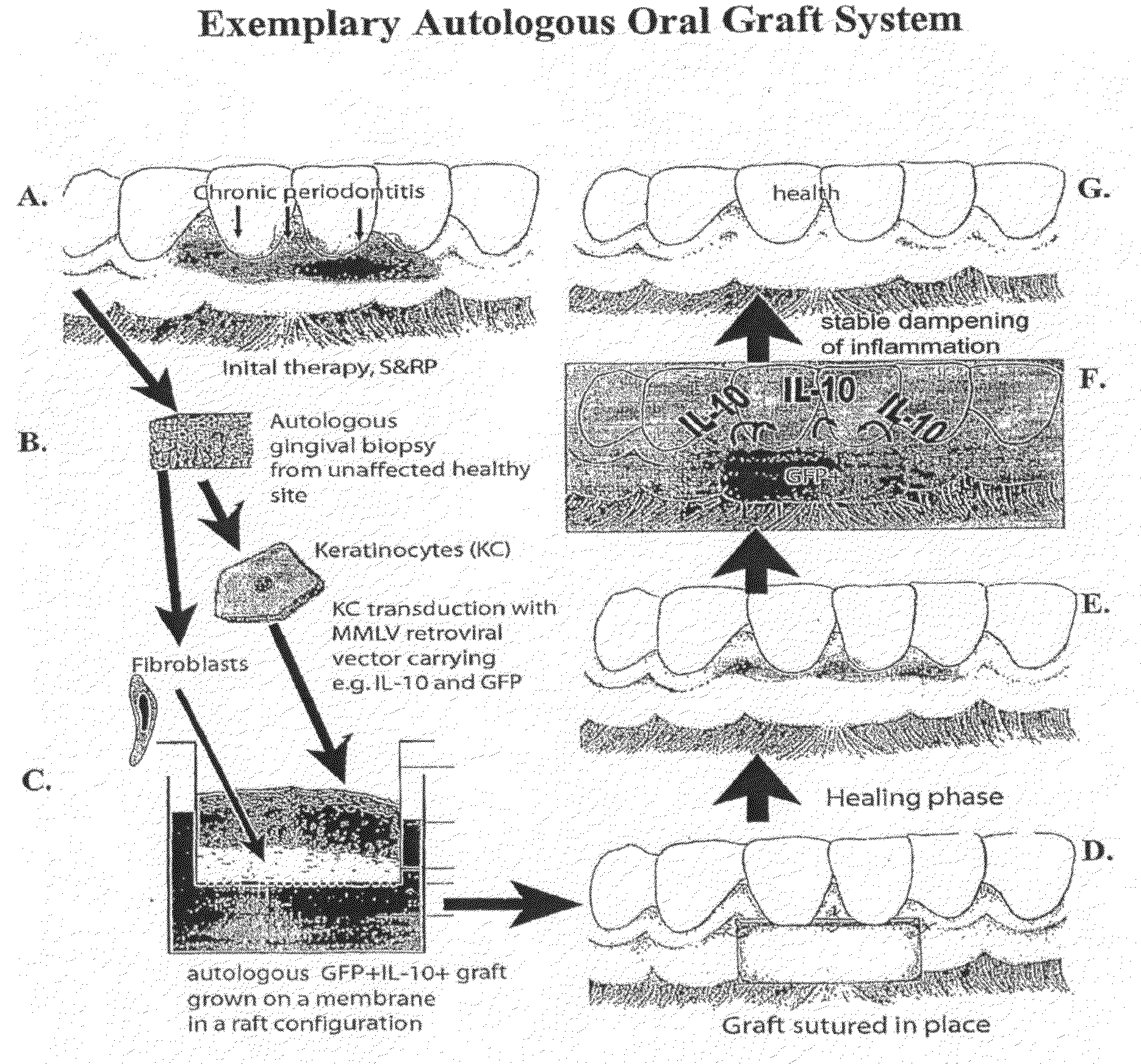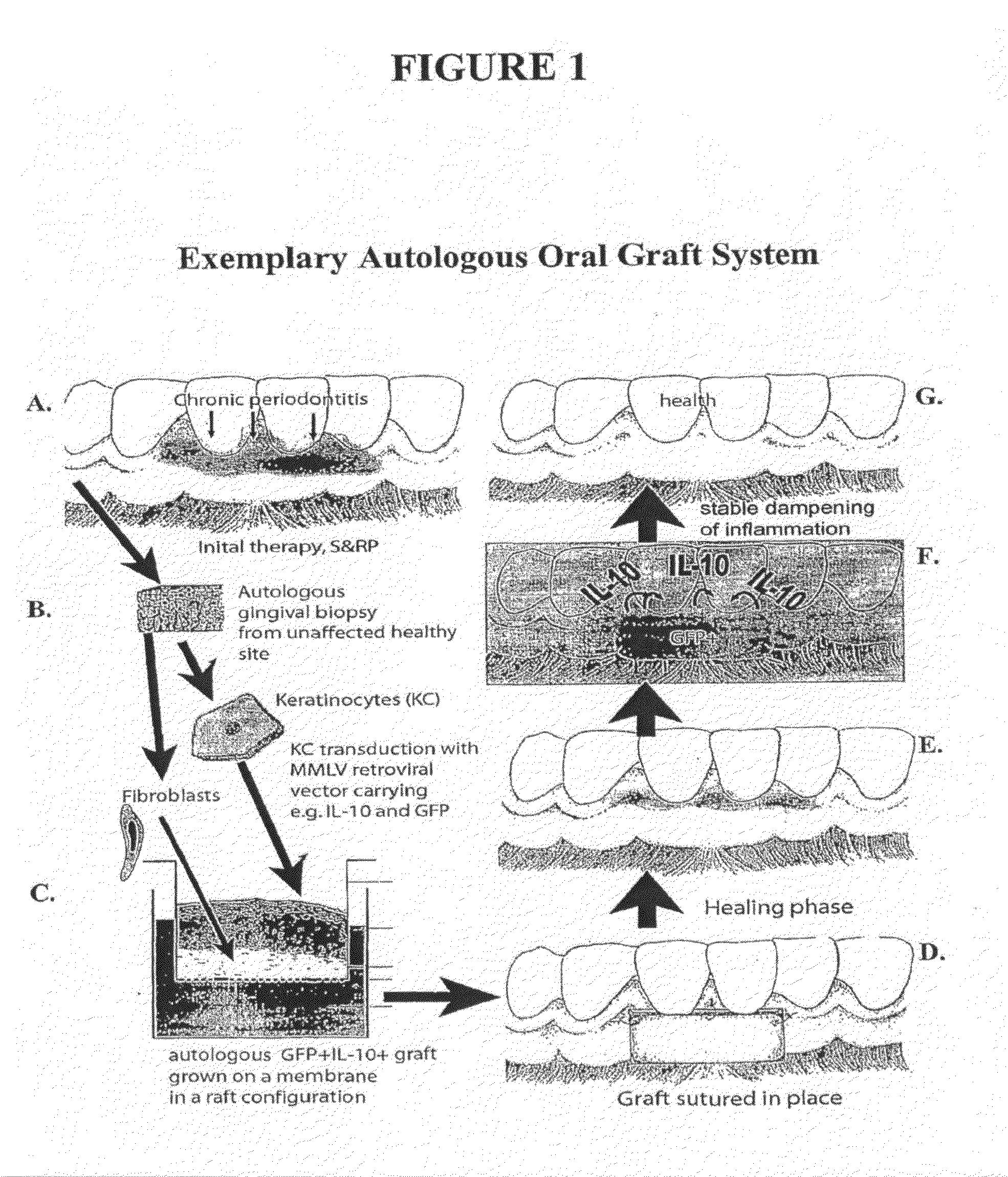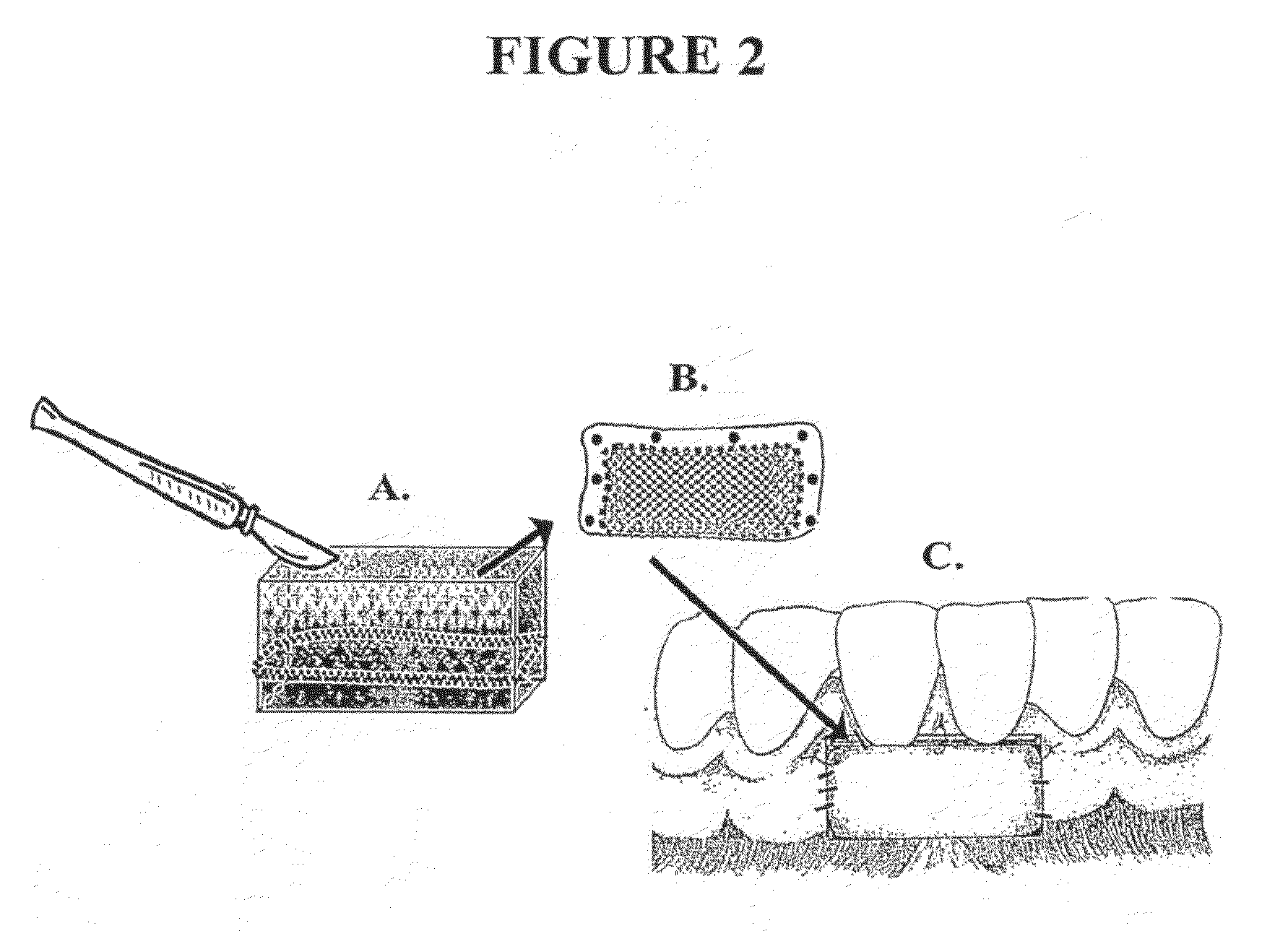Autologous Oral Grafts
a technology of autologous and oral cavity, which is applied in the field of autologous oral grafts, can solve the problems of increasing sensitivity to heat and cold, exposing the root surface, and teeth may even loosen, so as to reduce the amount of inflamed or damaged oral mucosa tissue in the oral cavity of the patient, and reduce the amount of inflammation or damaged tissu
- Summary
- Abstract
- Description
- Claims
- Application Information
AI Technical Summary
Benefits of technology
Problems solved by technology
Method used
Image
Examples
example 1
Generating Autologous Oral Grafts for Treating Oral Disease
[0079]This Example describes the generation of an autologous oral graft for treating oral diseases, such as those involving tissue inflammation or damage. A subject with an oral disease such as chronic periodontitis, is identified as needing treatment. Under local anesthesia, a dental surgeon removes an autologous full-thickness oral mucosal biopsy (e.g., ˜5 mm pie-shaped wedge) of keratinized oral mucosa from a healthy oral mucosal site from the patient. A single resorbable suture is placed at the biopsy site. The oral mucosal biopsy is rinsed with antibiotic containing buffer, and immediately transferred aseptically into liquid nitrogen vial provided to the dentist by the clinical lab, and mailed overnight to a graft manufacturing facility.
[0080]Once at the graft manufacturing facility, the autologous oral mucosal tissue is thawed, diced and / or enzymatically digested through standard procedures, and keratinocytes (KC) and ...
example 2
Treating Oral Disease with an Autologous Oral Graft
[0086]This Example describes the treatment of an oral disease with an autologous oral graft. In particular, a patient with chronic periodontitis is treated with the autologous oral graft prepared as described in Example 1. Initially, a surgeon prepares the graft recipient bed using a standard procedure for a free-oral mucosal graft. The autologous oral graft from Example 1 is removed from the vial by rimming it with a sterile 15 c scalpel while holding the oral graft with cotton forceps to prevent the graft from curling up prior to insertion. Next, the oral graft is inserted into the patient's mouth at the appropriate site along the gum tissue and is sutured in place with 5-0 gut chromic gut suture using a Castroviejo needle holder. Alternatively, the comers of the autologous oral graft are tacked down with surgical adhesive to stabilize the graft, and then it is sutured down tightly to the recipient bed. The autologous oral graft i...
example 3
Autologous Oral Grafts with Untransfected Oral Keratinocytes
[0088]In order to generate an autologous oral graft that employs untransfected oral keratinocytes, Example 1 could be repeated, while omitting the transfection steps. An oral graft generated in this manner could be employed to treat a patient with gingival recession, the result of damage to the oral mucosa by processes as described in Example 2. Treatment of oral disease with such un-transfected oral keratinocytes serves to help reduce the damage to the oral mucosa tissue or the oral calcified tissue in the oral cavity of the patient (e.g., by providing keratinized tissue and by secreting endogenous factors, such as cytokines and other proteins, that serve to reduce damage to the oral cavity).
PUM
 Login to View More
Login to View More Abstract
Description
Claims
Application Information
 Login to View More
Login to View More - R&D
- Intellectual Property
- Life Sciences
- Materials
- Tech Scout
- Unparalleled Data Quality
- Higher Quality Content
- 60% Fewer Hallucinations
Browse by: Latest US Patents, China's latest patents, Technical Efficacy Thesaurus, Application Domain, Technology Topic, Popular Technical Reports.
© 2025 PatSnap. All rights reserved.Legal|Privacy policy|Modern Slavery Act Transparency Statement|Sitemap|About US| Contact US: help@patsnap.com



